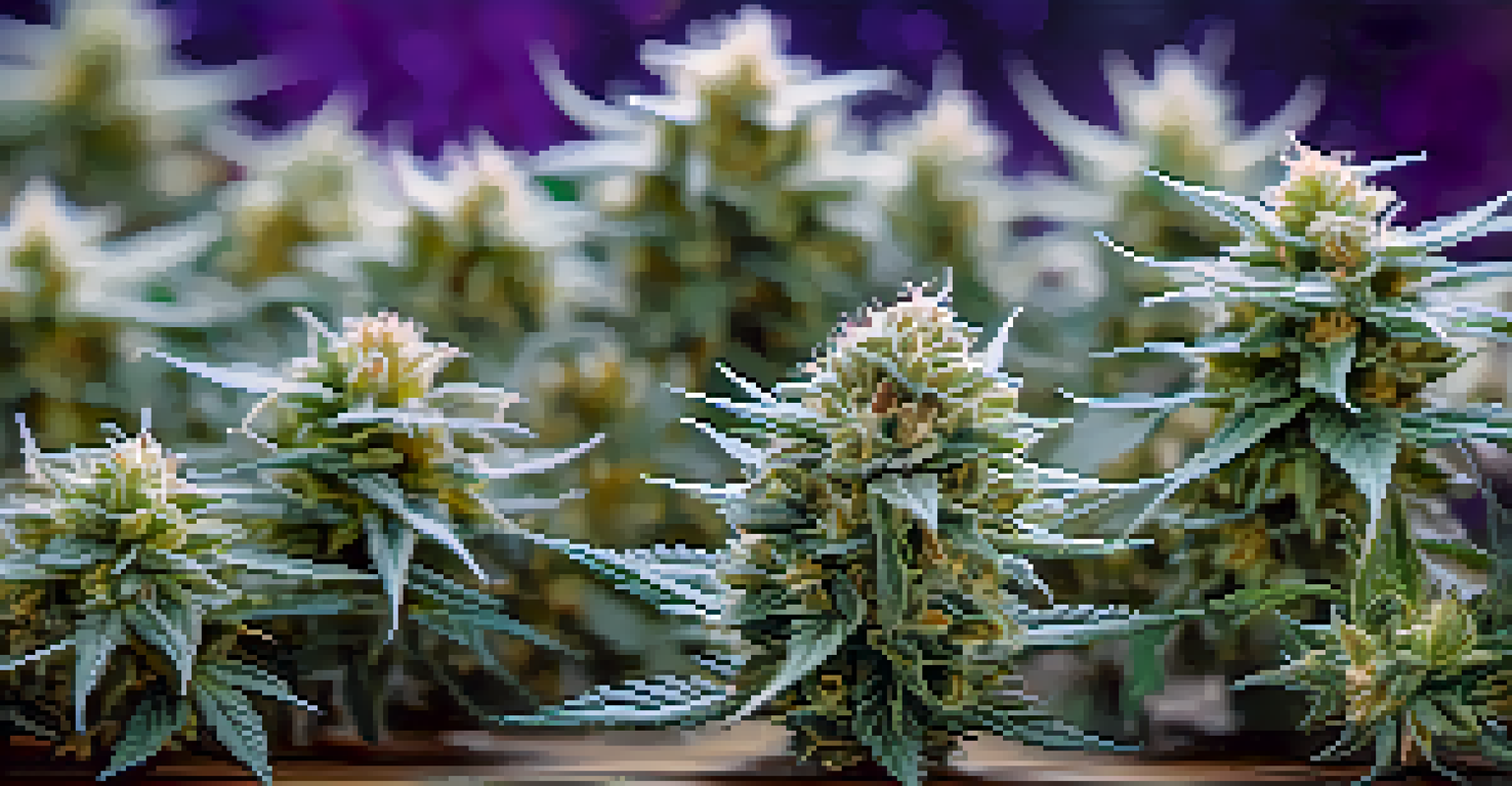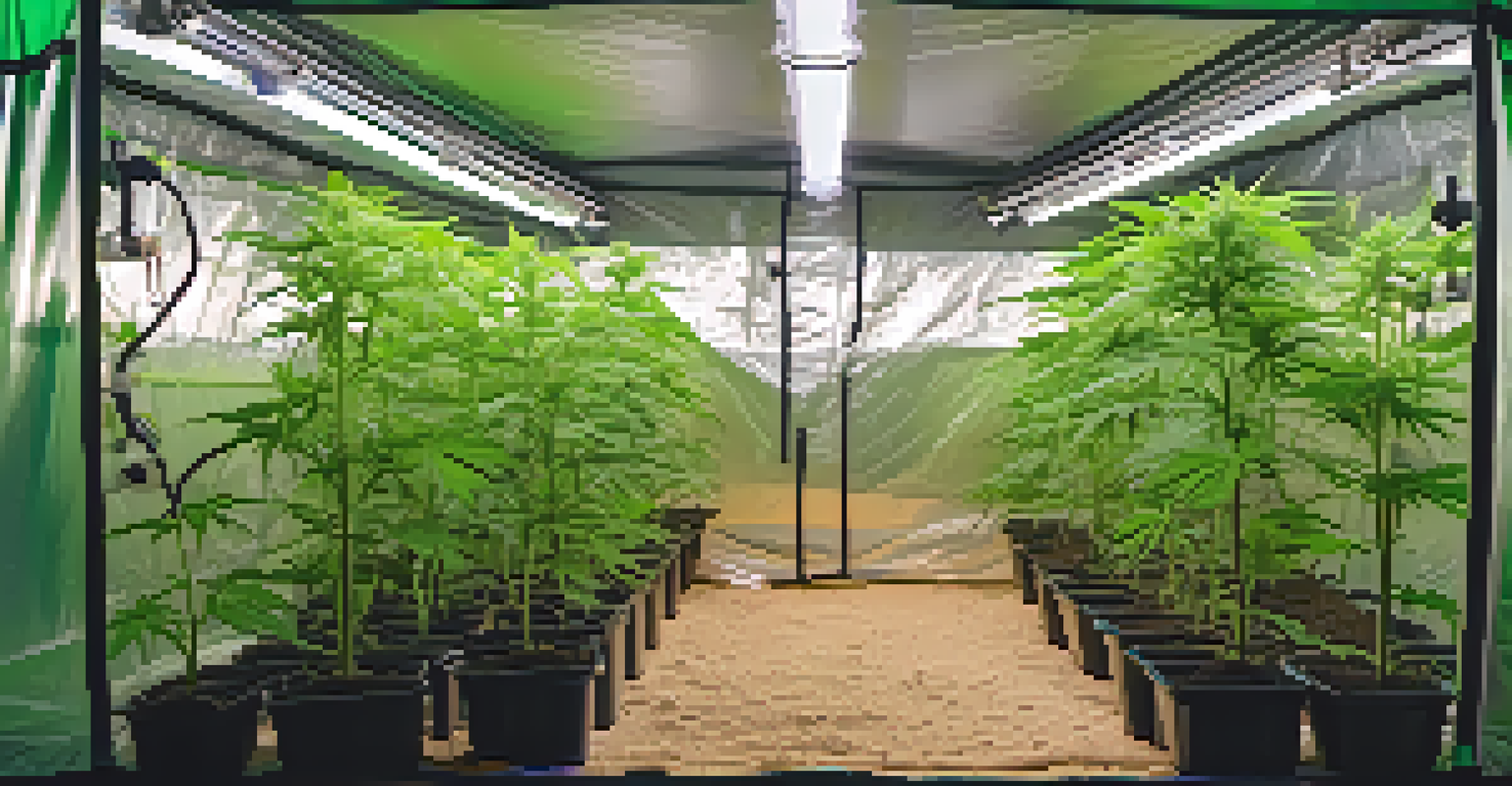Home Cultivation: Growing Your Own Marijuana Plants at Home

Understanding the Basics of Marijuana Cultivation
Before diving into home cultivation, it's essential to understand the basics of marijuana plants. These plants thrive in specific conditions, such as light, temperature, and humidity. Knowing the growth cycle—from seedling to harvest—will help you provide the right care at each stage.
The greatest gift of the garden is the restoration of the five senses.
Marijuana is typically grown in two main types: Indica and Sativa. Indica strains are known for their relaxing effects, while Sativa strains tend to be more uplifting. Understanding the differences can guide you in choosing the right strain for your personal preferences.
Moreover, familiarize yourself with local laws regarding home cultivation. Regulations can vary widely, so ensure you’re compliant to avoid any legal issues as you embark on your cultivation journey.
Choosing the Right Strain for Your Needs
Selecting the right strain is crucial for a successful home grow. Consider what effects you desire—relaxation, creativity, or pain relief—and choose a strain that aligns with those needs. Popular strains like Blue Dream or Granddaddy Purple offer a range of effects and flavors.

Another essential factor is your growing environment. Some strains are better suited for indoor growing, while others thrive outdoors. Evaluate your space and choose a strain that fits your cultivation approach to maximize your success.
Know Your Marijuana Strains
Understanding the differences between Indica and Sativa strains is crucial for selecting the right one to meet your personal needs.
Lastly, consider the growth time and yield of different strains. Some take longer to mature but yield more, while others are quick to flower but produce less. Balancing these factors will help you manage your expectations and efforts effectively.
Setting Up Your Indoor Growing Space
Creating an optimal indoor growing environment is key to healthy plants. Start with a grow tent or designated room that can be easily controlled for light, temperature, and humidity. Proper ventilation is also crucial to ensure fresh air circulation.
Gardening is a way of showing that you believe in tomorrow.
Lighting is another critical component. LED grow lights are popular for their energy efficiency and effectiveness in mimicking sunlight. Depending on your setup, you may need to adjust the light cycle to match the plant's growth stage, ensuring they receive the right amount of light.
Don’t forget about the growing medium! Whether you choose soil, hydroponics, or coco coir, each medium has its benefits. Researching and selecting the right medium can significantly impact your plants' health and productivity.
Essential Tools and Equipment for Cultivation
To cultivate marijuana successfully, you'll need some essential tools. A basic toolkit should include pots, a pH meter, and a thermometer to monitor your environment. These tools help ensure your plants thrive by maintaining proper conditions.
Investing in quality nutrients is also vital, as marijuana plants require specific nutrients at different stages of growth. Look for nutrient solutions designed for cannabis, as they often contain the right balance of nitrogen, phosphorus, and potassium.
Create an Ideal Growing Space
Setting up a controlled indoor environment with proper lighting, ventilation, and growing medium is key to successful marijuana cultivation.
Additionally, consider tools for monitoring humidity and airflow. Maintaining a stable environment is crucial for preventing mold and pests, which can derail your cultivation efforts. Regularly checking these levels will help you catch any potential issues early.
Understanding the Growth Cycle of Marijuana Plants
Marijuana plants go through several distinct stages of growth: germination, seedling, vegetative, and flowering. Each stage requires different care and attention, so understanding these cycles will help optimize your growing strategy.
During the germination phase, seeds sprout and begin to develop roots and leaves. This stage lasts about 1-2 weeks. Ensuring proper moisture and light during this time will set the foundation for healthy growth.
As plants transition to the vegetative stage, they begin to grow rapidly. This stage can last 3-16 weeks depending on the strain and your growing goals. Regular pruning and training techniques can help shape your plants and improve airflow, leading to a better final yield.
Watering and Nutrient Requirements for Healthy Plants
Watering is perhaps one of the most critical aspects of cultivation. Overwatering can lead to root rot, while underwatering can stress the plants, stunting their growth. It's essential to develop a watering schedule based on the moisture needs of your specific strain and growing conditions.
Along with water, your plants will need nutrients to thrive. During the vegetative stage, high-nitrogen fertilizers are beneficial, while flowering plants require more phosphorus and potassium. Following a feeding schedule can help ensure your plants receive the right nutrients at the right time.
Monitor Growth and Nutrients
Regularly check watering needs, nutrient levels, and pH to ensure your plants thrive throughout their growth cycle.
Regularly checking the pH of your soil or nutrient solution can also help prevent nutrient lockout, where plants can't absorb the nutrients they need. A pH level between 6.0 and 7.0 is ideal for most marijuana plants, ensuring they remain healthy and productive.
Harvesting and Curing Your Marijuana Plants
When your plants reach maturity, it's time for the rewarding process of harvesting. Look for signs like the color of the trichomes—clear to cloudy indicates peak potency. Timing your harvest is crucial for achieving the desired effects and flavors.
Once harvested, the next step is curing, which enhances flavor and potency. This process involves drying the buds in a controlled environment for about a week, followed by storing them in glass jars. Curing allows the flavors to develop while reducing the harshness of the smoke.

Be patient during the curing process; it can take several weeks to achieve optimal results. Regularly burping the jars to release excess moisture will prevent mold and ensure your final product is top-notch and enjoyable.
Troubleshooting Common Issues in Home Cultivation
Even experienced growers encounter issues from time to time. Common problems include pests, nutrient deficiencies, and environmental stress. Recognizing the signs early can make a significant difference in saving your plants.
Pests like spider mites and aphids can wreak havoc on your crop. Implementing organic pest control methods, such as neem oil or insecticidal soap, can help keep these invaders at bay without harming your plants or the environment.
Nutrient deficiencies often manifest as discoloration in leaves. Keeping a close eye on your plants will help you identify and address these issues promptly, ensuring your plants remain healthy and productive throughout their growth cycle.